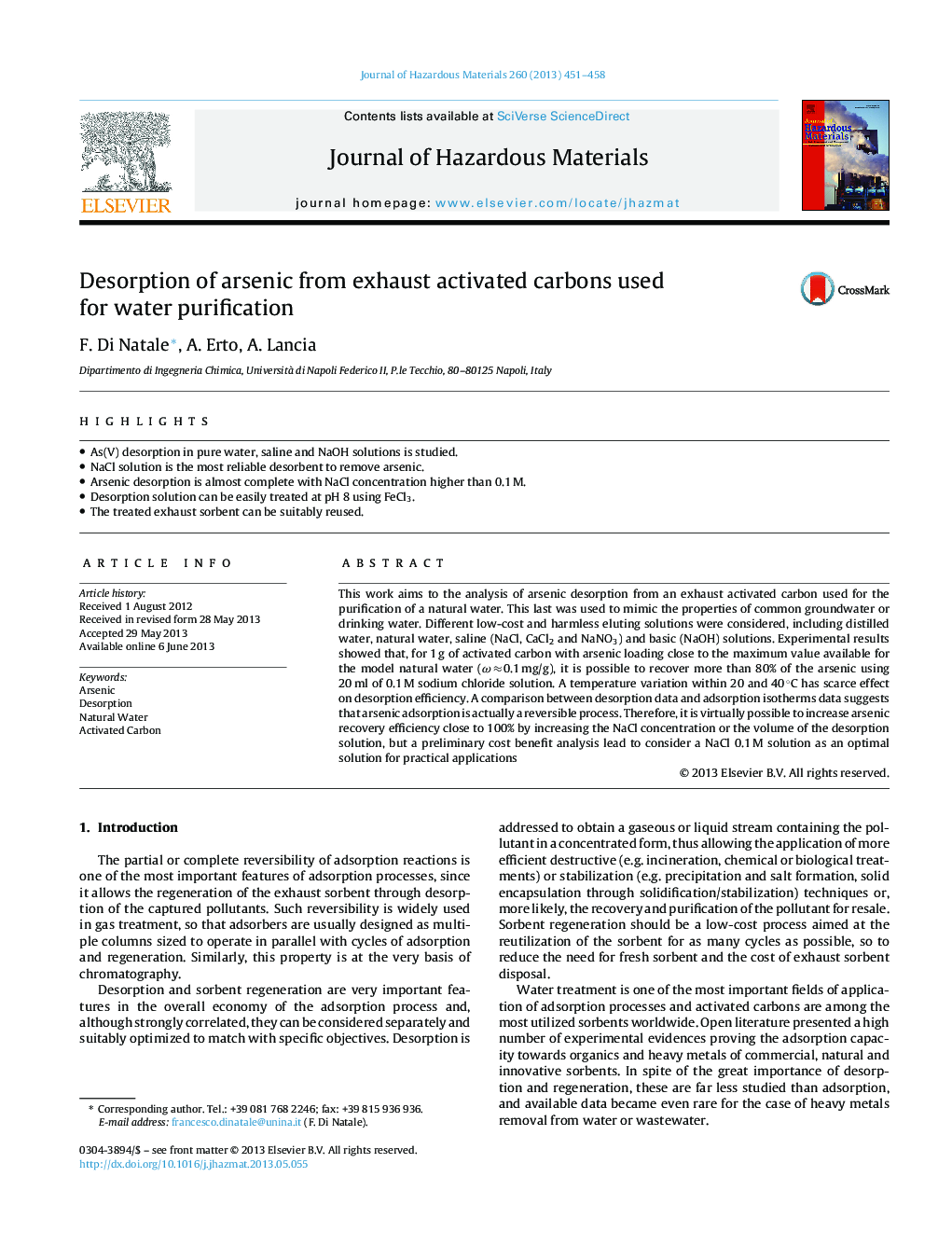| Article ID | Journal | Published Year | Pages | File Type |
|---|---|---|---|---|
| 6972405 | Journal of Hazardous Materials | 2013 | 8 Pages |
Abstract
This work aims to the analysis of arsenic desorption from an exhaust activated carbon used for the purification of a natural water. This last was used to mimic the properties of common groundwater or drinking water. Different low-cost and harmless eluting solutions were considered, including distilled water, natural water, saline (NaCl, CaCl2 and NaNO3) and basic (NaOH) solutions. Experimental results showed that, for 1 g of activated carbon with arsenic loading close to the maximum value available for the model natural water (Ï â 0.1 mg/g), it is possible to recover more than 80% of the arsenic using 20 ml of 0.1 M sodium chloride solution. A temperature variation within 20 and 40 °C has scarce effect on desorption efficiency. A comparison between desorption data and adsorption isotherms data suggests that arsenic adsorption is actually a reversible process. Therefore, it is virtually possible to increase arsenic recovery efficiency close to 100% by increasing the NaCl concentration or the volume of the desorption solution, but a preliminary cost benefit analysis lead to consider a NaCl 0.1 M solution as an optimal solution for practical applications
Related Topics
Physical Sciences and Engineering
Chemical Engineering
Chemical Health and Safety
Authors
F. Di Natale, A. Erto, A. Lancia,
